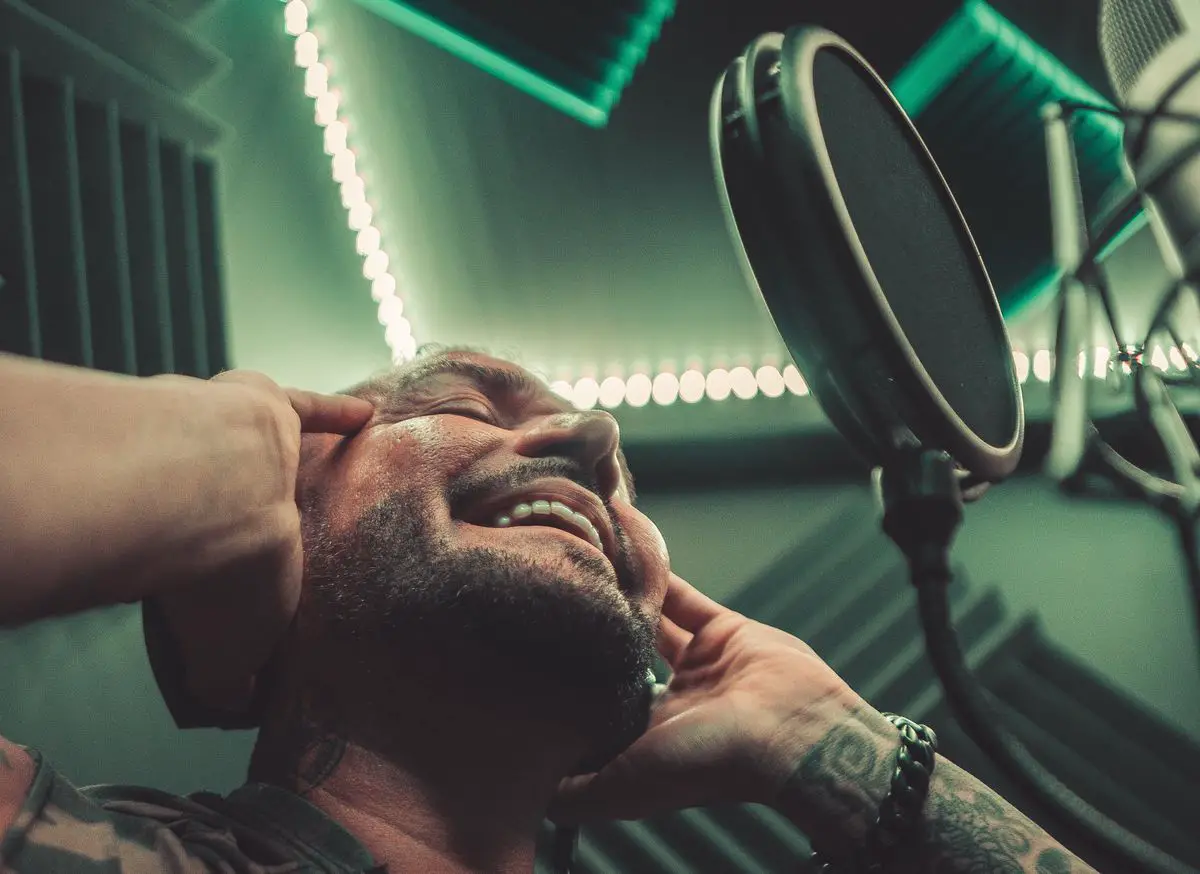Voice Recording: How to Treat a Room for Recording Vocals

Recording quality vocals at home comes down to having decent equipment and an acoustically treated room. Artists (or bands) such as the Rolling Stones, Kylie Minogue, The Beach Boys, Fleetwood Mac, John Lennon and many more have recorded albums in home studios and sounded great. In this article, I will explain how you can treat your room for recording vocals too.
Treating a room for recording vocals begins with reducing background noise, such as open windows or fans. Acoustic panels are then placed based on the room's size, covering 50-75% of the room's surface area. Fabrics or foam panels are often used but fibreglass and rockwool absorb the most sound.
You can learn more about where to place acoustic panels in your room and how you can keep costs down in the article below. I will also discuss the common practice of recording in the closet and why it's not such a good idea.
How to Treat a Room for Recording Vocals
People can get creative when it comes to keeping the cost down when treating a room for vocals. But the most important thing is to do it right.
Acoustic treatment follows the physical principles of sound transmission and absorption, so having a basic understanding of what you're trying to achieve makes a world of difference. I will keep things simple, but will throw some of this physics into the mix as we go along.
With that said, below are ways you can treat any room for vocal recording.
1. Reduce Background Noise
Reducing background noise is so simple yet can often be missed. Stand in your room and listen to what noises you can hear. Every sound you hear has a chance of being picked up in your recording (although a good recording microphone is designed to minimise this).
Below are some practical ways you can reduce background noise.
- Shut all windows and secure them so they don't rattle or whistle
- Consider heavy curtains to block outside noise (dogs, sirens, cars, etc.)
- Press a towel against the bottom of the door to block any noise (mainly if you have others in the house)
- Turn off fans, air conditioners or heaters (unless they run quietly)
2. Work with the Size of Your Room
The size and layout of your room will determine how much treatment it will need. The idea is to dampen the sound enough so that you have a 'blank canvas' to work with in your mix. However, you don't want your voice to sound completely dead.
How Big is Your Room?
A smaller room (or closet) will naturally muffle your singing voice in the recording and accentuate lower frequencies. This makes it harder to produce a clear sound. A larger space, on the other hand, will require more treatment but will naturally have a clearer sound.
What Shape is Your Room?
It's not overly common, but having a completely square room will create modal issues with the sound waves in your room. This means that certain frequencies will be more obvious in the recording. Again, this makes it harder to produce a clear sound with acoustic treatment.
What is in Your Room?
Take a look at what is in your room. Materials such as curtains, bed sheets, carpet and rugs will absorb sound, whereas hard smooth surfaces will reflect sound. Walls, hard floors, the ceiling and other flat surfaces will all create echoes and sound disturbance in the recording.
3. Install Acoustic Panels
Acoustic panels are square or rectangular panels that are designed specifically to absorb sound. They are used on the flat smooth surfaces that would normally reflect sound and create a disturbance in the recording.
What Material is Best?
The best material for acoustic panels is fibreglass or rockwool (also known as 'mineral wool'). These two materials absorb the largest range of frequencies, giving a clearer recording.
BUILD YOUR OWN: Making your own fibreglass or rockwool panels is incredibly cheap and easy. Take a look at this article to learn how you can save hundreds of dollars by building your own acoustic panels!
A popular and cheaper option is acoustic foam (or foam panels). This is better than nothing, but will still allow some disturbance to come through the recording. You may be able to get away with this if you are in a carpeted room with other sound absorbers around the room (such as curtains and furniture).
How Many?
Your acoustic treatment should cover at least 50-75% of the surface area in your vocal recording room. Therefore, the amount of panels required is determined by the size of the panels and the size and layout of your room. I will talk a bit more about setting up the panels further down.
Thickness
The best acoustic panels are usually 4-6 inches thick. Most cheaper panels are less than 1-inch thick to keep costs down and to 'look nice', but these won't absorb as much of the sound. You'll end up needing more of these , particularly lower notes, creating a more uneven recording.
Attaching to the Walls
Something to keep in mind is that anything that sticks to the walls is going to be hard to take off when you want to convert the room back to its original purpose. This is especially true with adhesive acoustic foam, which will need to be scraped off (foam rips and leaves a thin fluffy layer on the wall). Ideally, you should have panels that hang like pictures.
Types of Acoustic Treatment
- Acoustic panels - attached to the walls (and/or ceiling)
- Acoustic diffusers - textured panels to scatter the sound (decreases chances of sound bouncing back to the microphone)
- Bass traps - thick acoustic panels, often with an air-gap, designed to sit in the corners of the room (where bass frequencies are accentuated)
Generally, if you invest in quality acoustic panels, you will not need acoustic diffusers. If you were using foam panels, I would certainly recommend it (but you will notice that all acoustic foam is designed to diffuse sound as well).
Bass traps are, again, more of a necessity with cheaper (ie foam or thin) treatments. Cheaper or thinner acoustic panels will only absorb mid/high frequencies, allowing bass/low frequencies to resonate (muffling the vocals). Once you have panels setup, run a test to see if you need any at all.
Setup
You can get creative with your acoustic setup. Scattering your acoustic panels around the room is best to create an even treatment. You don't want to completely cover every surface as this will make the vocals sound dull and muffled.
When placing your panels, it is best to match up the exposed areas of the wall with acoustic panels on the other side. In other words, where there is exposed wall on one side, there should be a panel on the other side.
The panels should be focussed around head height, which is where most of the sound waves will travel.
Most people don't bother with treating the ceiling because it is easier to install carpet in the room or simply place down a rug.
Once you have your treatment out of the way, make sure you have checked through the list of essentials for recording your voice at home. You can find this list, as well as my recommendations, here.
Recording Vocals in a Closet
Recording vocals in your closet is a bad idea.
The area is too small and will create a dull and muffled sound. To put it simply, recording in your closet will make it sound like you have recorded the vocals in your closet.
As I mentioned earlier, rooms that are 3-5 feet or smaller create this effect because they create a resonance of low frequencies (this is what muffles your voice). Larger rooms only resonate frequencies outside the critical vocal range.
You are much better setting up your home-recording studio in a multipurpose room or bedroom, where you have a more natural sound that can then be dampened with acoustic treatment to create a clear (but not muffled) recording.
